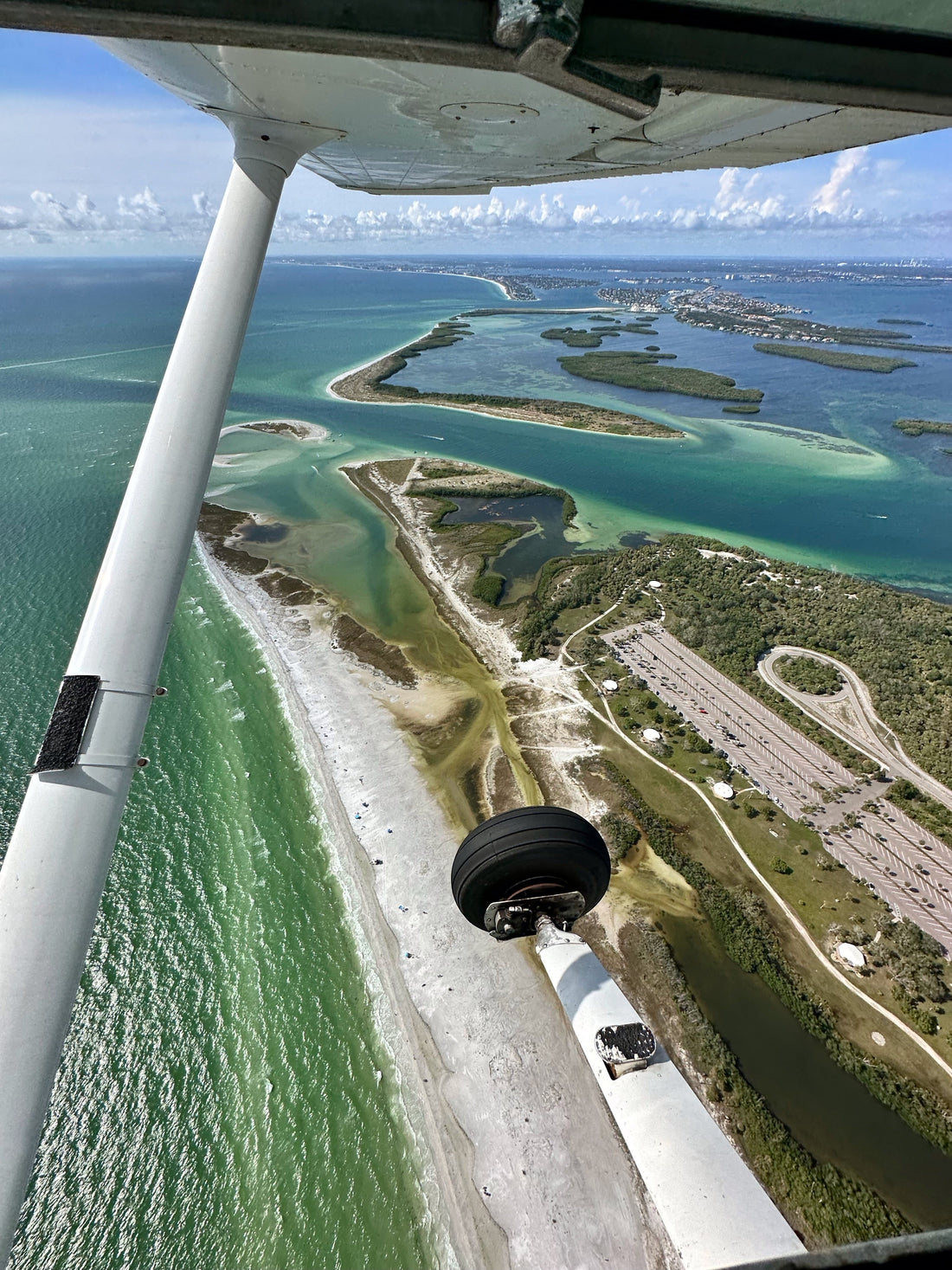
Step-By-Step Guide To Performing Ground Reference Maneuvers
One of the things you’ll learn early on in your flight training journey are ground reference maneuvers. They might seem simple at first mention — flying circles around a point on the ground or doing an S-turn across a road — but these maneuvers require coordination, an understanding of the winds, and some serious precision!
Before we get into the steps, let’s talk about why these maneuvers matter. The goal of ground reference maneuvers is to develop your ability to:
- Maintain a constant altitude and airspeed while maneuvering
- Adjust your bank angle to compensate for the wind
- Improve coordination between aileron and rudder input
- Build better situational awareness
These maneuvers simulate real-life scenarios like entering the traffic pattern, correcting for winds on final approach, or even executing an emergency landing in a field. Let’s take a look at these ground reference maneuvers:
1. Turns Around a Point
This is a classic maneuver that helps pilots learn how to maintain a constant radius around a point on the ground while compensating for the wind.
Setup:
Pick a reference point—something easy to see, like a water tower, large tree, or an intersection of roads.
Make sure you're at the recommended altitude (600-1,000 feet AGL) per ACS guidelines.
Maintain a safe distance from the point—usually about a quarter to half a mile away.
Determine the wind direction by looking at smoke, flags, or how your ground speed changes during turns.
Have a good emergency landing spot picked out next to your reference point in case of an engine failure during the maneuver. Remember you’re low to the ground and won’t have much time to find a landing site if your engine fails. Have it planned out ahead of time!
Steps:
Enter on the downwind so that the wind is behind you (tailwind). This will make the rest of the maneuver a little bit easier.
Begin a turn around the point, keeping a steepest bank angle on the downwind, where your groundspeed is highest.
As you turn into the headwind (i.e. your groundspeed begins to slow down), shallow your bank angle to compensate for the decreasing groundspeed. If you don’t shallow your bank in the headwind, the wind will carry you away from your point, and you’ll no longer be doing turns around the point you selected.
When turning back to downwind, increase your bank angle again.
Continue adjusting bank angle to maintain an equal distance from your point. This is key! Don’t let yourself get too close or too far from your point on the ground. Stay the same distance from your reference point all the way around the circle.
Common Mistakes:
Failing to adjust bank angle for wind corrections. Pro tip: Watch your airspeed vs groundspeed. If your groundspeed is higher than your airspeed, you have a tailwind and this will require more bank. If your groundspeed is lower than your airspeed, you have a headwind and this will require less bank.
Letting altitude fluctuate—stay consistent!
Fixating on the reference point instead of scanning the area for traffic. Also fixating on instruments in the plane instead of looking outside!
2. S-Turns Across a Road
S-turns help you practice wind correction while transitioning smoothly between turns of opposite direction. The goal is to create two equal half-circles on either side of a straight road, railroad, or other ground feature.
Setup:
Choose a straight road or powerline with good visibility.
Maintain 600-1,000 feet AGL.
Enter on the downwind at a 90-degree angle (perpendicular) to the road.
Like with the turns around a point, select a good emergency landing spot in case of an engine failure.
Steps:
Start with a steep bank turn as you cross the road (because of the higher groundspeed).
Gradually shallow the bank as you turn into the headwind.
Just before reaching the road again, level your wings momentarily.
Immediately start turning in the opposite direction, beginning with a shallow bank since you now have a headwind.
Increase the bank angle as you turn back to downwind.
Common Mistakes:
Unequal turn radius due to poor wind correction.
Rolling out too early or too late when crossing the road.
Letting altitude vary—keep it steady!
3. Rectangular Course
This maneuver essentially mimics a standard traffic pattern and helps pilots learn to compensate for wind when flying a set ground track. With my students, I like to take them to an actual traffic pattern at a less busy airport, but sometimes it can be more ideal to first practice over a field before entering an actual traffic pattern.
Setup:
Find a large, well-defined rectangular area, like a field or a group of buildings.
Maintain 600-1,000 feet AGL.
Enter on the downwind at a 45-degree angle, just like in a traffic pattern.
Steps:
As you fly downwind, use a crab angle to correct for drift.
When turning onto the base leg (perpendicular to the wind), use a steeper bank angle to maintain the shape of the rectangle.
On the upwind leg, expect slower groundspeed and shallow the bank angle when turning your crosswind.
Use a crab angle again on the crosswind leg to track straight.
Continue making corrections as needed to keep the pattern rectangular.
Common Mistakes:
Drifting inside or outside the rectangle due to improper wind correction.
Not maintaining altitude. Remember you need to be able to maintain pattern altitude when flying in the traffic pattern at an airport.
Over-controlling during turns.
Pro Tips for Success
Look outside! It’s easy to get focused on your instruments, but these are visual maneuvers—keep your eyes on the reference points and horizon.
Stay ahead of the wind. Anticipate drift and adjust early rather than reacting too late.
Use smooth control inputs. Avoid jerky movements—everything should be gradual.
Scan for traffic. These maneuvers are usually done in practice areas where other aircraft may be nearby.
Fly coordinated. Use rudder appropriately to prevent slipping or skidding through turns.
Final Thoughts
Ground reference maneuvers may seem basic, but they’re foundational for precise flying. Mastering these skills will help you fly better in the traffic pattern, navigate more effectively, and handle crosswind landings with confidence.
We have a beautiful spot in our area called Fort DeSoto where we train some of these ground reference maneuvers. It’s a state park with stunning beaches and a giant flag pole at the center of the park, perfect for turns around a point! It’s become a favorite spot for ground reference maneuvers. Find that perfect spot in your area and get really comfortable practicing ground reference maneuvers there! You might be surprised at how much it improves your overall flying!
Fly safe!
By Josh Page, CFI
Northstar Aviation References brings you the Pre-Tabbed ASA FAR/AIM, DIY tabs for your FAR/AIM and other pilot resources so that you can more easily study the regulations that form the foundation of your flying career or hobby. Have any questions? Check out our FAQs page or contact us. Check out other blog posts here.
